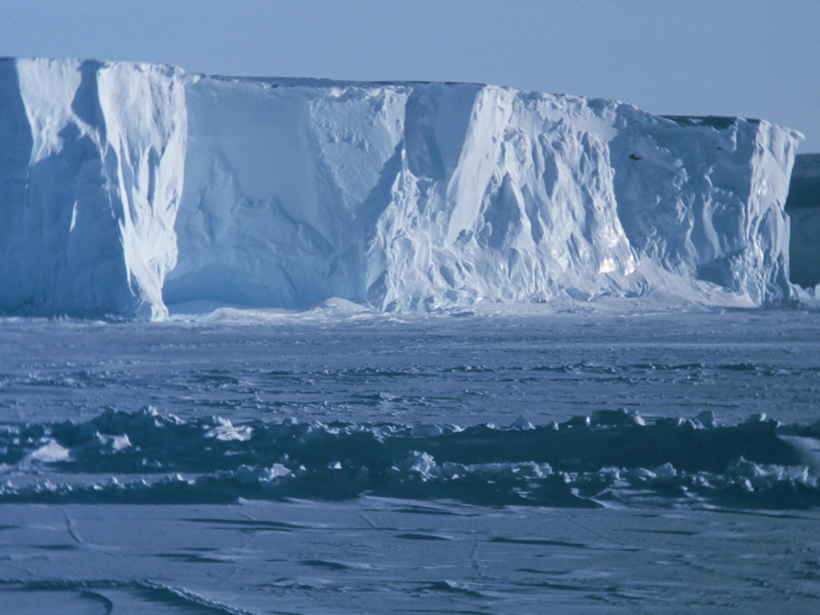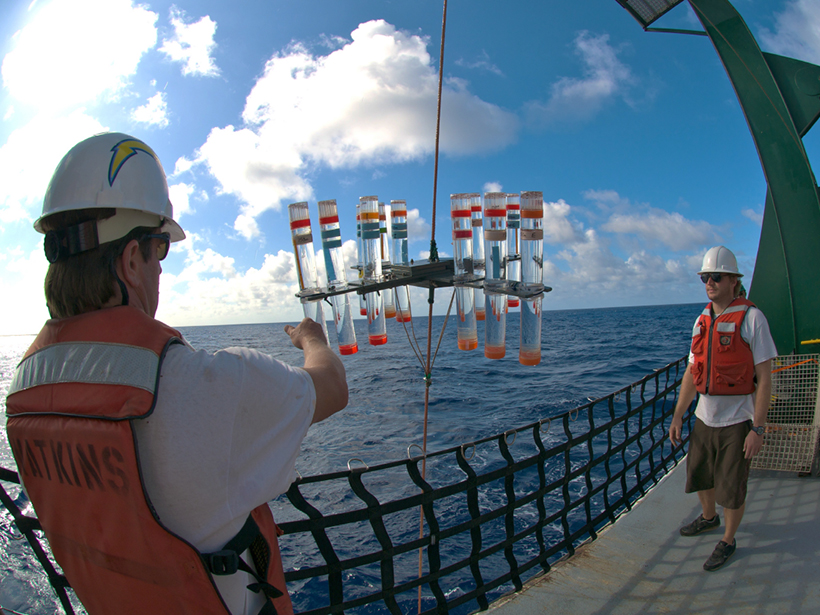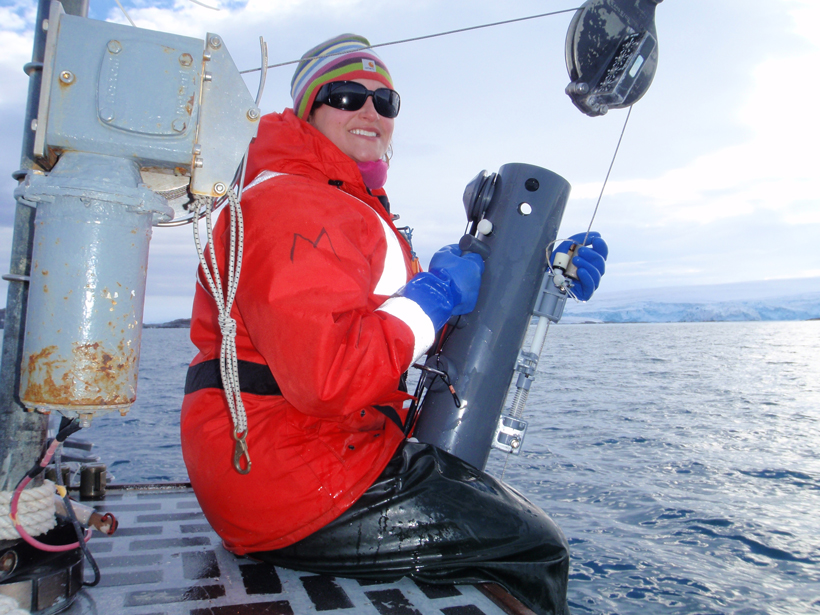Scientists bored 755 meters through Antarctic ice and found that a layer of extremely cold, fresh water insulates part of the Ross Ice Shelf against melting.
Ocean Sciences Meeting
Gulf Stream Slowed as Hurricanes Struck
Hurricanes Jose and Maria temporarily decelerated this powerful ocean current’s flow last year, according to data from an ocean glider that rode the stream between Florida and Massachusetts.
Monitoring Ocean Change in the 21st Century
Time series data sets, which contain measurements repeated over a span of decades, yield important insights into our oceans’ vital signs.
Asphalt Volcanoes Erupt in Slow Motion
Natural asphalt seeps on the ocean floor provide a stable home for diverse marine life that sequesters greenhouse gases.
More Acidic Oceans Could Reduce Fertility for Algae Eaters
New research shows that increased levels of carbon dioxide in the oceans cause changes that alter key nutrients essential to the reproduction of animals low on the food web.
Dirty Water: Unintended Consequence of Climate Resiliency
Scientists testing the quality of floodwater in a Florida city find potentially harmful bacteria.
Teaching the Art and Science of Getting Research Funding
National Science Foundation–funded EDventures program delivers successful training in proposal writing to graduate students and postdocs.







